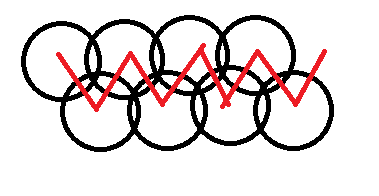What is the minimum number of touches for painting at least a $100*100$ rectangle if you have one circular stamp tool that paints a circular area of $1$ unit radius in every touch?
This question is very similar to Paint the rectangle with least movement. But this time there is no brush tool for painting.



